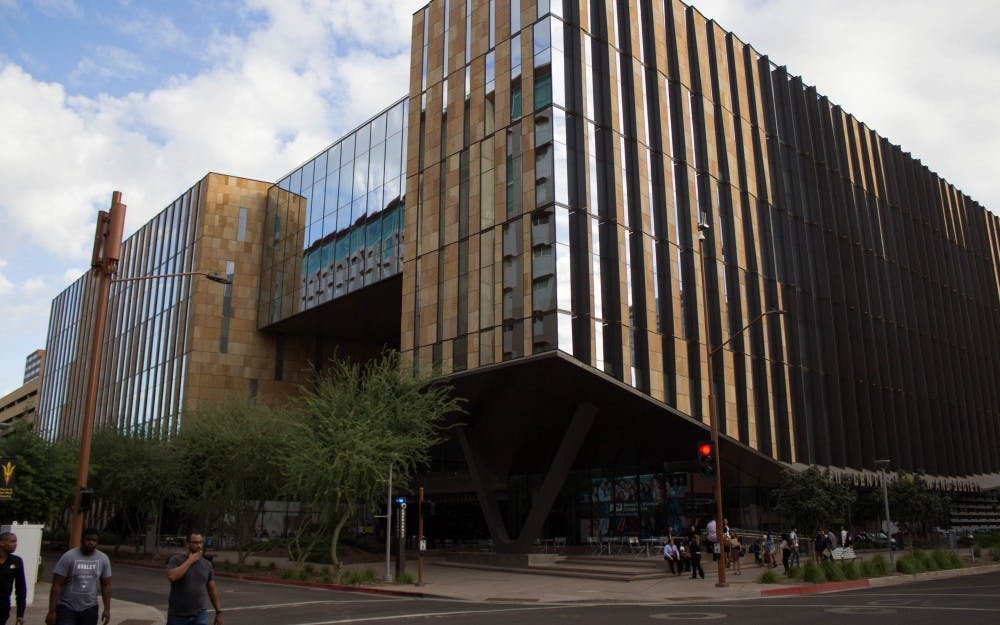Downtown Phoenix is a thriving community in the fifth-largest city in the U.S., but it wasn’t always like that.
It wasn’t until 2006, when students from ASU’s College of Public Programs, the College of Nursing and University College began taking classes in downtown Phoenix that the city’s vibe really started to change.
“ASU had breathing bodies,” Marshall Shore, a self-titled "hip historian" of Arizona, said. “Downtown had always been a smattering of folks. ASU brought in a different energy and vitality. At that point, you really started seeing things pick up.”
Arizona, and the metro-Phoenix area specifically, is home to millions of people, but a lot of them are not originally from the state. According to a recent report by WalletHub, Arizona is one of the top-10 retirement states in the U.S.
The problem with all those incoming people is that not many are from Phoenix, so they aren’t as conscientious about getting the most out of what the city has to offer.
If people are still working age, they typically don’t live in downtown Phoenix. They commute to work from metro-Phoenix communities like Scottsdale, Chandler or Glendale, put in their eight hours and head home.
ASU is changing that.
The influx of young people brought on a swift demographic shift to the area. On-campus housing meant college-age students would be in downtown Phoenix year-round, so the area had to adapt.
“I was very aware there really wasn’t much going on (before ASU came downtown),” Shore said. “There was very little open after 10 p.m. In terms of social groups going on, there were a handful of social groups, but it was the same 20 people going to all of them. It’s great to now see so much happening now.”
For example, fans leaving a sporting event at Chase Field or Talking Stick Resort Arena pre-2006 that ended after 10 p.m. might’ve been greeted with quiet streets and nowhere to go but home.
Now, chain restaurants and local hubs are open later into the night, especially on Fridays and Saturdays.
In addition, Roosevelt Row Arts District, established in the 1940s, has been revitalized over the past decade. It's located just a few streets over from ASU’s campus and is a cultural melting pot and a place for people of all ages and backgrounds to come together and experience each other’s unique cultures.
“There’s something to do almost any night,” Shore said. “There are typically three or four events I want to go to, so I have to decide which one I want to go to that night. It’s exciting to see the growth and the change.”
With the influx of students in the area, demand for housing downtown has skyrocketed. Many apartment complexes opened near the Downtown Phoenix campus over the past few years, and there are more scheduled to open in the coming year.
ASU has also been able to preserve and renovate many historic landmarks downtown Phoenix offers.
The Westward Ho and the post office next to it have been somewhat modernized to make them functional while still preserving the older characteristics that make them timeless buildings.
“I’m glad to see with the old post office that ASU has taken some of that,” Shore said. “That used to be the main depot for mail. When I first heard that ASU was moving into the post office, my fear was that they were going to take over most of the building, but they’ve done a nice job balancing it.”
With the increase in human engagement within the city comes a desire for expansion for many large companies, and it seems as though downtown Phoenix always has some part of the city blocked off for construction.
The key is maintaining the balance between the new buildings and architecture that are bringing new people in, but not doing away with historic homes and landmarks that were the foundation for the city in the past.
Regardless, downtown Phoenix most likely wouldn’t be the sprawling metropolis it is today if ASU hadn’t moved to the area. The city should only continue to grow as long as ASU continues to thrive.
Reach the columnist at Steven.Slobodzian@asu.edu or follow @PSlobodzianASU on Twitter.
Like The State Press on Facebook and follow @statepress on Twitter.
Editor’s note: The opinions presented in this column are the author’s and do not imply any endorsement from The State Press or its editors.
Want to join the conversation? Send an email to opiniondesk.statepress@gmail.com. Keep letters under 500 words and be sure to include your university affiliation. Anonymity will not be granted.




